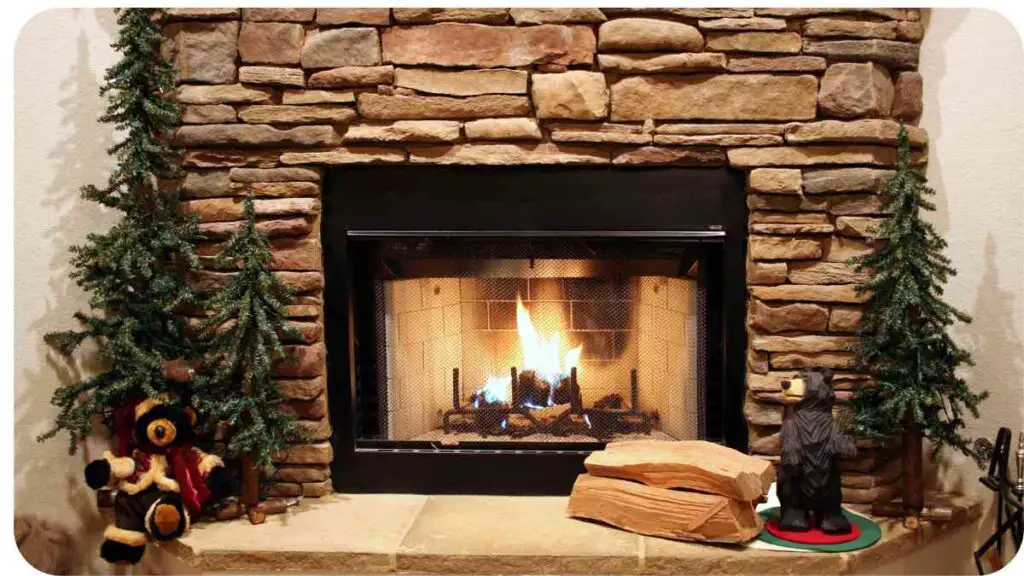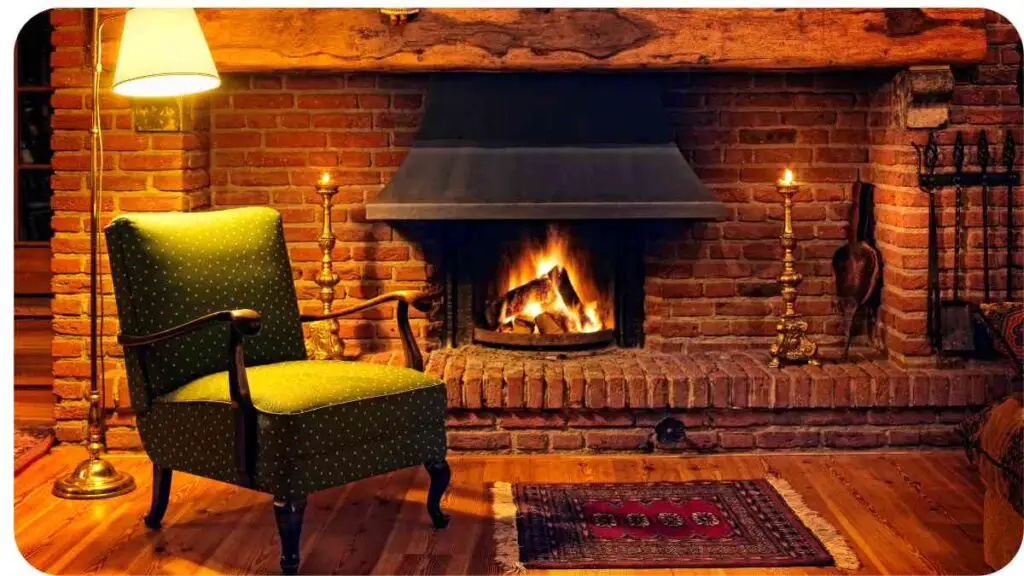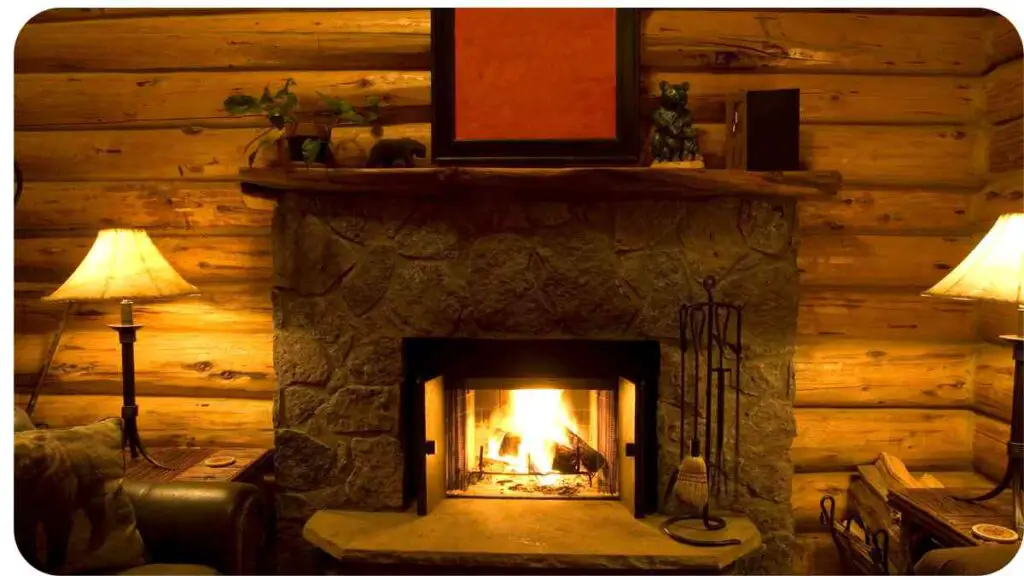Fireplaces have evolved over the years, and two popular options in the market are Direct Vent and B-Vent Fireplaces. In this comprehensive guide, we’ll delve into the intricacies of both, offering insights, tips, and personal anecdotes from my experience in the field.
| Takeaways |
|---|
| Consider efficiency when choosing a fireplace. |
| Regular maintenance enhances fireplace safety. |
| Safety features vary between Direct Vent and B-Vent. |
| Cost considerations include installation and fuel expenses. |
| Environmental impact should align with personal values. |
| Ventilation is crucial for optimal fireplace performance. |
Direct Vent Fireplaces are renowned for their efficiency and versatility. Let’s explore their features in Table 1.
Gas fireplace ignition issues are common problems that homeowners may encounter. This guide provides step-by-step solutions to troubleshoot and resolve such issues, ensuring a reliable and efficient gas fireplace.
Table 1: Features of Direct Vent Fireplaces
| Feature | Description |
| Ventilation | Sealed combustion system for optimal indoor air quality |
| Efficiency | Direct extraction of combustion air from the outside |
| Installation Flexibility | Can be installed in various locations within a home |
| Aesthetics | Glass front provides a clear view of the fire |
1.2 Exploring B-Vent Fireplaces

While Direct Vent Fireplaces have their merits, B-Vent Fireplaces offer a different set of characteristics. Let’s dive into the specifics in Table 2.
Table 2: Characteristics of B-Vent Fireplaces
| Characteristic | Description |
| Ventilation | Uses room air for combustion, requiring proper venting |
| Installation | Requires a vertical vent pipe |
| Aesthetics | Open-front design for a traditional fireplace look |
| Cost | Generally more affordable upfront |
B-Vent Fireplaces bring a classic charm, but understanding the differences is crucial for effective troubleshooting.
Experiencing a pilot light outage in your fireplace? Discover quick fixes and essential safety tips to address pilot light issues effectively. Keep your fireplace operating smoothly with these practical solutions.
2. Installation and Setup
2.1 Direct Vent Installation Guide
When opting for a Direct Vent Fireplace, proper installation is key. Refer to Table 3 for a step-by-step guide.
Table 3: Direct Vent Fireplace Installation Steps
| Step | Description |
| Step 1 | Choose an appropriate location within your home |
| Step 2 | Install the vent pipe and ensure a secure connection |
| Step 3 | Connect the gas line and test for leaks |
| Step 4 | Secure the fireplace in place and seal any gaps |
Ensuring a meticulous installation paves the way for optimal performance. Now, let’s move on to B-Vent Fireplace setup tips.
2.2 B-Vent Fireplace Setup Tips
B-Vent Fireplaces have specific requirements. Refer to Table 4 for essential do’s and don’ts during installation.
Table 4: B-Vent Fireplace Installation Do’s and Don’ts
| Consideration | Recommendation |
| Do | Ensure proper vertical venting for efficient operation |
| Do | Regularly inspect and clean the vent pipe |
| Don’t | Use the fireplace without proper ventilation |
| Don’t | Neglect to check for any blockages in the vent system |
Proper installation lays the foundation for a trouble-free experience with your B-Vent Fireplace.
3. Common Issues Faced
3.1 Pilot Light Problems
Direct Vent Fireplaces may encounter pilot light issues. Refer to Table 5 for troubleshooting tips.
If your infrared fireplace is not emitting heat as expected, this guide highlights key factors to check and troubleshoot. Ensure optimal performance from your infrared fireplace by addressing and resolving heat emission issues.
Table 5: Troubleshooting Pilot Light Issues
| Issue | Troubleshooting Steps |
| Pilot won’t ignite | Check for gas supply and ensure the gas valve is open |
| Pilot goes out | Inspect thermocouple for proper connection and function |
| Weak flame | Clean pilot orifice and ensure proper gas pressure |
| Intermittent flame | Verify the thermopile is positioned correctly |
Understanding these issues empowers you to address pilot light concerns effectively. Now, let’s delve into ventilation challenges.
3.2 Ventilation Concerns
Whether you have a Direct Vent or B-Vent Fireplace, ventilation is crucial. Table 6 provides insights into addressing ventilation problems.
Table 6: Addressing Ventilation Problems
| Issue | Troubleshooting Tips |
| Poor draft | Check for obstructions in the vent pipe |
| Smoke spillage | Ensure the chimney cap is in good condition |
| Unpleasant odors | Clean the chimney and inspect for any debris |
| Excessive soot buildup | Adjust the air-to-fuel ratio for optimal combustion |
Maintaining proper ventilation enhances the safety and performance of your fireplace.
3.3 Maintenance Challenges
Both types of fireplaces require regular maintenance to ensure longevity and optimal performance. Table 7 outlines essential maintenance tips.
Achieve the perfect flame height by adjusting settings on your gas fireplace. This simple guide walks you through the process, allowing you to customize the flame height for a more comfortable and visually appealing ambiance.
Table 7: Maintenance Tips for Direct Vent and B-Vent Fireplaces
| Maintenance Task | Frequency |
| Clean the glass | Monthly |
| Inspect and clean vents | Annually |
| Check gaskets and seals | Bi-annually |
| Schedule professional inspection | Every 2-3 years |
Regular maintenance not only prevents issues but also extends the lifespan of your fireplace. Now, let’s move on to the efficiency and performance considerations.
4. Efficiency and Performance
4.1 Direct Vent Efficiency Factors
Direct Vent Fireplaces are known for their efficiency. Table 8 highlights factors affecting their performance.
Table 8: Factors Affecting Direct Vent Fireplace Efficiency
| Factor | Impact on Efficiency |
| Proper installation | Ensures optimal combustion |
| Regular maintenance | Prevents buildup and ensures airflow |
| Quality fuel | Influences flame intensity and heat |
Understanding these factors allows you to maximize the efficiency of your Direct Vent Fireplace.
4.2 B-Vent Performance Considerations
While B-Vent Fireplaces offer a different experience, their performance can be optimized with the right measures. Table 9 outlines how to enhance B-Vent Fireplace performance.
Table 9: Enhancing B-Vent Fireplace Performance
| Consideration | Impact on Performance |
| Proper venting | Ensures efficient combustion |
| Adequate ventilation | Prevents smoke spillage |
| Quality fuel | Influences flame stability |
| Regular cleaning | Avoids soot buildup |
Understanding these considerations helps you address performance issues and enjoy a cozy, efficient fire.
5. Safety Measures
Ensuring the safety of your home and loved ones is paramount when dealing with fireplaces. Let’s explore the safety features of both types.
Resetting your electric fireplace is a fundamental step in resolving common issues. This guide takes you back to basics, providing clear instructions on how to reset your electric fireplace for optimal functionality.
5.1 Safety Features in Direct Vent Fireplaces
Direct Vent Fireplaces come equipped with various safety features. Table 10 outlines these features for your reference.
Table 10: Direct Vent Fireplace Safety Features
| Safety Feature | Description |
| Sealed combustion system | Minimizes the risk of gas leaks |
| Tempered glass front | Prevents accidental burns |
| Oxygen depletion sensor | Shuts off if oxygen levels are low |
Understanding these features enhances your confidence in the safety of Direct Vent Fireplaces.
5.2 Ensuring Safety with B-Vent Fireplaces

While B-Vent Fireplaces have a different design, safety remains a top priority. Table 11 outlines essential safety guidelines for B-Vent Fireplaces.
Table 11: B-Vent Fireplace Safety Guidelines
| Safety Guideline | Description |
| Proper ventilation | Ensures the safe release of combustion byproducts |
| Keep combustibles away | Maintain a safe distance from flammable materials |
| Regular chimney inspection | Identify and address any structural issues |
| Install a carbon monoxide detector | Monitors air quality for added safety |
Adhering to these safety guidelines ensures a secure and enjoyable experience with your B-Vent Fireplace.
6. Cost and Maintenance Comparison
Let’s shift our focus to the practical aspects—cost and maintenance considerations for both types of fireplaces.
6.1 Cost Analysis for Direct Vent Fireplaces
Direct Vent Fireplaces may have different costs associated with them. Table 12 breaks down the costs for your consideration.
Table 12: Direct Vent Fireplace Cost Breakdown
| Cost Component | Breakdown |
| Initial Purchase | Includes the fireplace unit and installation |
| Fuel Costs | Ongoing expenses for gas or propane |
| Maintenance | Regular cleaning, inspections, and repairs |
| Energy Efficiency | Long-term savings on heating bills |
Understanding the costs involved helps you make informed decisions about your investment.
6.2 Maintenance Expenses of B-Vent Fireplaces
B-Vent Fireplaces may present a different cost structure for maintenance. Table 13 provides insights into the maintenance expenses you may encounter.
Table 13: B-Vent Fireplace Maintenance Costs
| Maintenance Task | Approximate Frequency |
| Chimney cleaning | Annual |
| Inspection by a professional | Bi-annually |
| Replacement parts | As needed |
| Fuel and combustion analysis | Regularly |
Understanding these maintenance costs allows you to budget effectively and plan for the ongoing care of your B-Vent Fireplace.
7. Environmental Impact

As we become more environmentally conscious, it’s crucial to consider the ecological impact of our choices. Let’s explore this aspect for both Direct Vent and B-Vent Fireplaces.
7.1 Direct Vent Eco-Friendly Features
Direct Vent Fireplaces often come with eco-friendly features. Table 14 highlights the environmental benefits associated with Direct Vent fireplaces.
Table 14: Environmental Benefits of Direct Vent Fireplaces
| Environmental Benefit | Description |
| Reduced emissions | Sealed combustion system minimizes pollutants |
| Energy efficiency | Less energy waste, lower carbon footprint |
| Sustainable fuel options | Use of natural gas or propane |
| Air quality improvement | Sealed design prevents indoor air pollution |
Understanding these benefits allows you to make a choice that aligns with your environmental values.
7.2 B-Vent Fireplaces and Sustainability
B-Vent Fireplaces, while offering a traditional charm, have their own considerations regarding environmental impact. Table 15 outlines factors to assess the sustainability of B-Vent Fireplaces.
Table 15: Assessing B-Vent Fireplaces’ Environmental Impact
| Environmental Consideration | Description |
| Combustion byproducts | Room air used for combustion, affecting indoor air quality |
| Wood fuel consumption | Dependency on wood as a fuel source, impacting deforestation |
| Limited energy efficiency | Lower efficiency compared to sealed systems, leading to more energy consumption |
| Carbon footprint | Higher emissions compared to some modern heating options |
Understanding these considerations allows you to weigh the environmental impact of B-Vent Fireplaces against other options.
8. Personal Recommendations
8.1 My Experience with Direct Vent Fireplaces
In my years of professional experience, I’ve found that Direct Vent Fireplaces offer an excellent balance of efficiency, safety, and environmental friendliness. The sealed combustion system provides peace of mind regarding indoor air quality, while the energy efficiency contributes to long-term cost savings.
8.2 Navigating Challenges with B-Vent Fireplaces
While B-Vent Fireplaces bring a nostalgic ambiance, they require meticulous attention to ventilation and maintenance. Personally, I’ve encountered instances where proper chimney cleaning and regular inspections were essential to address performance issues.
8.2 Navigating Challenges with B-Vent Fireplaces
In my professional journey, I’ve navigated challenges with B-Vent Fireplaces, and one key aspect is the reliance on proper ventilation. Ensuring the venting system is well-maintained and free of blockages is crucial for optimal performance and safety.
While B-Vent Fireplaces may require a bit more attention to detail, their classic design and affordability can make them a charming choice for homeowners seeking a traditional fireplace experience. However, it’s essential to strike a balance between ambiance and functionality.
9. Conclusion
In conclusion, choosing between Direct Vent and B-Vent Fireplaces involves weighing various factors such as efficiency, safety, maintenance costs, and environmental impact. Direct Vent Fireplaces offer modern features and eco-friendly benefits, making them a practical choice for those prioritizing efficiency and indoor air quality.
On the other hand, B-Vent Fireplaces bring a nostalgic feel but require careful attention to ventilation and regular maintenance.
Ultimately, the decision depends on your preferences, budget, and commitment to maintenance. Whichever fireplace you choose, understanding the nuances of installation, troubleshooting, and maintenance is key to enjoying a safe and cozy home environment.
As you embark on the journey of selecting and maintaining a fireplace, remember that each type has its unique characteristics and considerations. Regular inspections, timely maintenance, and adherence to safety guidelines are the pillars of a delightful fireplace experience. Whether you opt for the modern efficiency of Direct Vent or the traditional charm of B-Vent, a well-informed decision ensures warmth and comfort in your home.
Feel free to reach out if you have any more questions or need further assistance. Happy fireplace hunting!
Further Reading
- Gas Fireplace Troubleshooting: 3 Quick Tips: Explore quick and effective troubleshooting tips for gas fireplaces. This resource provides insights into common issues and practical solutions, enhancing your ability to maintain and troubleshoot your fireplace.
- Venting Explained by Heat & Glo: Delve into the intricacies of fireplace venting with this comprehensive guide by Heat & Glo. Gain a deeper understanding of how proper venting contributes to the efficiency and safety of your fireplace, ensuring a cozy and secure home environment.
- Differences Between B-Vent, Direct Vent, and Vent-Free Gas Heating Appliances: Northline Express provides valuable insights into the distinctions between B-Vent, Direct Vent, and Vent-Free gas heating appliances. This resource is a must-read for those seeking clarity on the different options available in the market.
FAQs
Is Direct Vent more efficient than B-Vent Fireplaces?
Yes, Direct Vent Fireplaces are generally more efficient as they have a sealed combustion system, extracting combustion air directly from outside, minimizing heat loss and optimizing efficiency.
What are common troubleshooting tips for pilot light issues?
Troubleshooting pilot light problems involves checking gas supply, ensuring the gas valve is open, inspecting the thermocouple, cleaning the pilot orifice, and verifying the correct positioning of the thermopile.
How often should I clean the glass of my Direct Vent Fireplace?
It is recommended to clean the glass of your Direct Vent Fireplace on a monthly basis to maintain a clear view of the fire and ensure optimal aesthetic appeal.
What safety features do Direct Vent Fireplaces typically have?
Direct Vent Fireplaces often come equipped with safety features such as a sealed combustion system, tempered glass front to prevent burns, and an oxygen depletion sensor that shuts off if oxygen levels are low.
What factors should I consider for choosing between Direct Vent and B-Vent Fireplaces?
Considerations include efficiency, safety features, maintenance costs, and environmental impact. Direct Vent is known for efficiency, while B-Vent provides a traditional look with lower upfront costs.

My name is Hellen James. I’m an expert in writing about fireplaces, hearths, and firepits because they’re a beautiful part of home decor, but also because they can be so much more than just a fireplace—they’re a way to enjoy the outdoors even when it’s cold outside!


